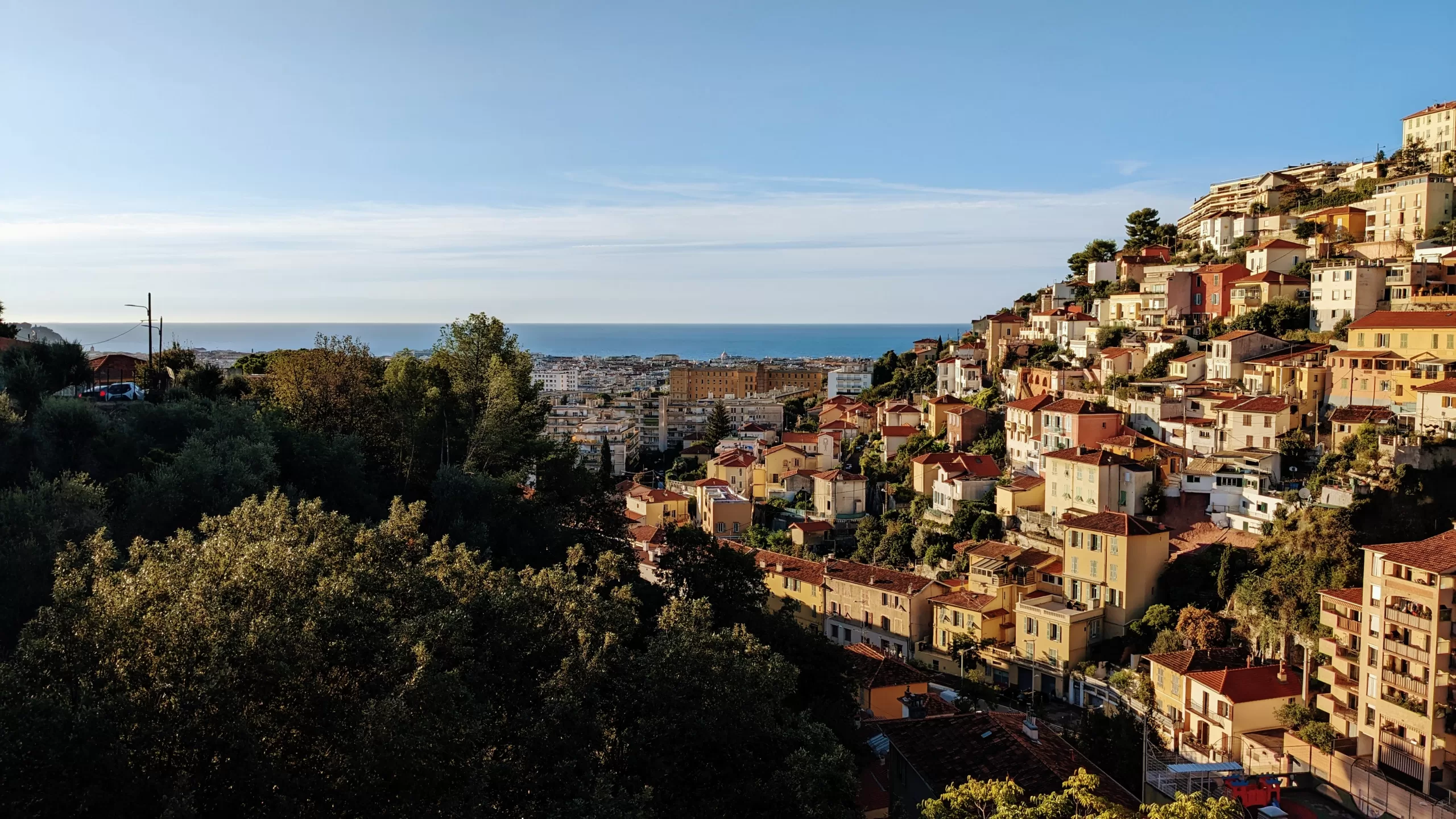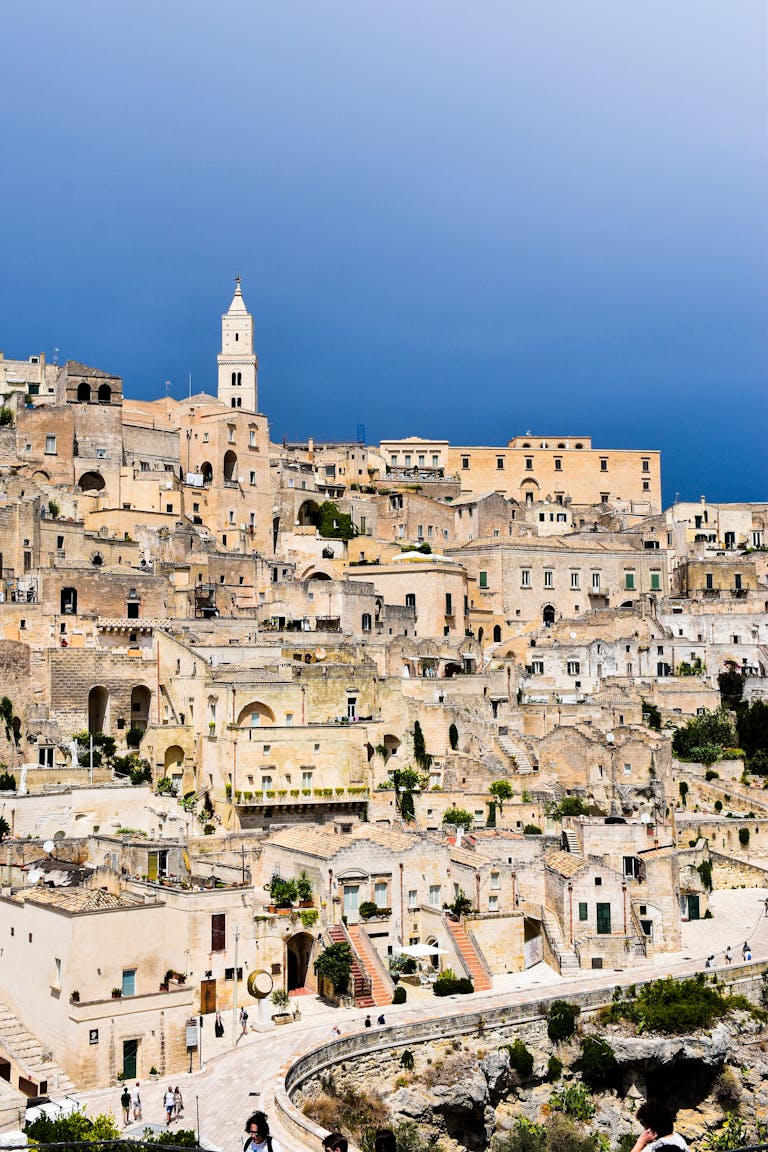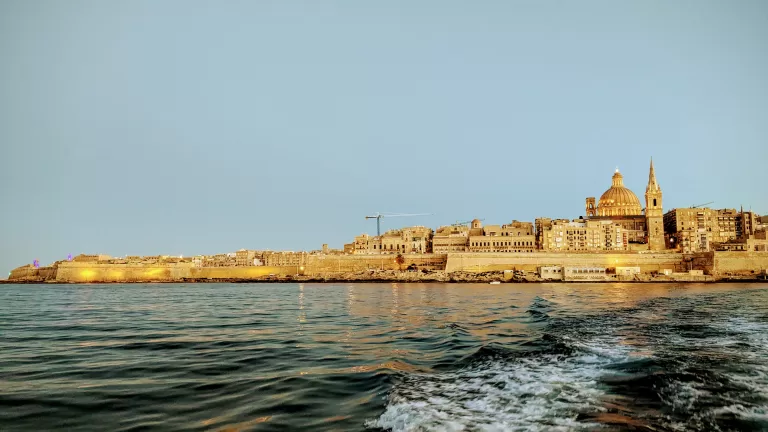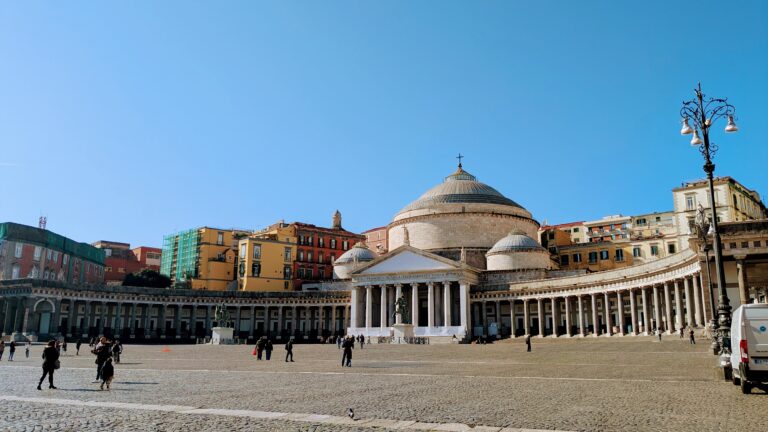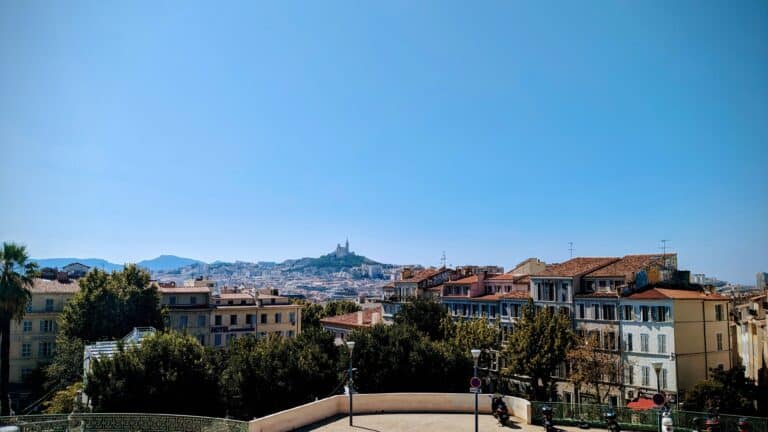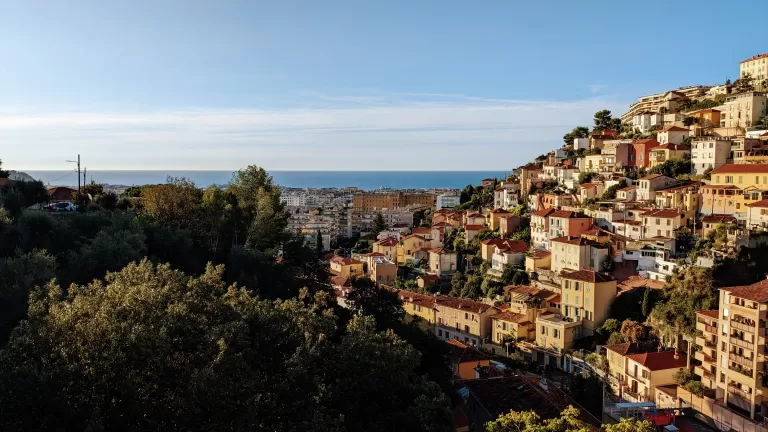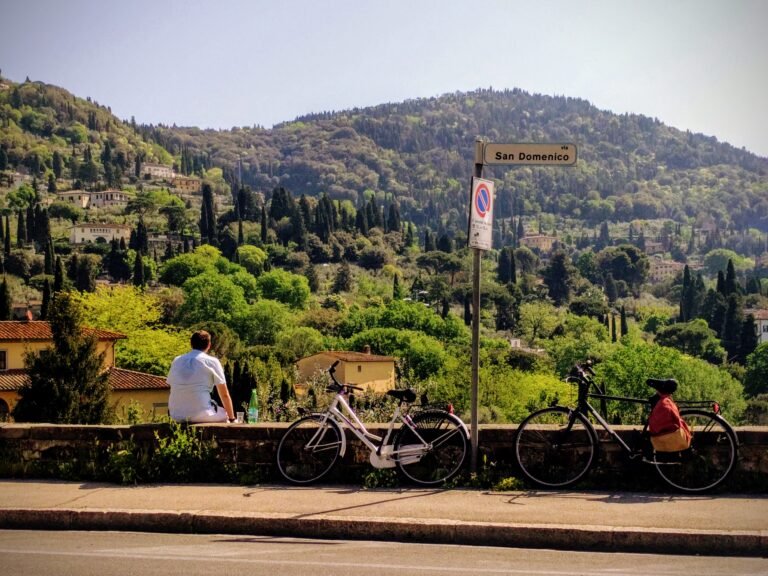Ultimate guide to the south of France (2025)
The South of France is a dream destination – from sun-soaked beaches to charming medieval villages and incredible food and wine.
The hard part isn’t “should we go?”, it’s “how do we choose where to go?”
When we first started planning our trip, we had about 30 tabs open and no clear plan: Which towns are must-see? How do you get around efficiently? What experiences are actually worth your time?
Since then we’ve done it properly and written deep-dives on the big hitters (like Nice, Marseille, Monaco), plus the practical stuff like how to get the Eurostar there and when to go.
This ultimate guide is designed for travellers who want clarity without the overwhelm. We’ve included insider tips on the best places to visit (both iconic and hidden gems), practical travel advice, and recommendations on where to stay. By the end, you’ll have a complete roadmap to explore the South of France like a local.
Planning your trip to the South of France
How long should you stay in the south of France?
To experience the best the south of France has to offer, a stay of at least 10 days is ideal. This gives you time to soak in the glamour of Cannes and St. Tropez, the history of Avignon, and the natural beauty of places like the Calanques in Cassis and the Gorges du Verdon.
A week lets you balance the bustling energy of larger cities like Nice and Marseille with quieter escapes to Saint-Paul-de-Vence and Les Baux de Provence.
If you’re short on time, four to five days is enough to enjoy a focused trip to the Côte d’Azur or Provence, but you’ll miss some hidden gems.
But, the south of France is a big place with so many must-see destinations. You really can’t stay here too long, so give yourself as much time as possible (or, come back again!).
At-a-glance itineraries
• 4–5 days (Riviera taster): Base in Nice (3–4 nights) with day trips to Antibes and Monaco.
• 7 days (Riviera + a taste of Provence): Nice (4), Marseille (3) with a day trip to the Calanques.
• 10 days (Riviera + Provence): Nice (4), Marseille (3), Aix-en-Provence/Avignon (3) with day trips to lavender/Pont du Gard.
Where should you stay in the south of France?
Where you stay depends on your travel style.
For luxury, the south of France is home to glamorous hotels in St. Tropez, Antibes, and Cannes. Nice offers a range of boutique hotels in the city centre, putting you close to iconic landmarks like the Promenade des Anglais. See our guide to the best things to do in Nice for neighbourhood context before you book.
If you’re seeking tranquillity, head inland to Provence, where gîtes (guesthouses) offer an authentic, rustic experience in villages like Saint-Paul-de-Vence and Les Baux de Provence.
For nature, towns like Cassis or Cavaillon offer proximity to outdoor adventures like hiking the Calanques or exploring the Lavender fields of Provence. You can also find coastal villas with stunning views of the Mediterranean Coast or opt for a bed and breakfast in Aix-en-Provence to enjoy local culture, fresh produce, and artisanal markets.
So, it depends on your travel style, but of course it’s not just where you go but how long. For us, Cannes wasn’t as important but we still wanted to go, so we went there as a day trip from Nice (but, for others, you may want to spend a few days here).
When you’re ready to book your hotel, we use Booking.com – we found that it had the best prices for hotels in the South of France.
How do you get to the south of France?
For most travellers the quickest mix is a flight or train into Nice or Marseille, then regional trains or a hire car for Provence days.
If you’re flying in, the main airports are Nice Côte d’Azur (NCE) and Marseille Provence (MRS). Avignon airport has regional flights. All three airports are well connected to major cities and destinations.
If coming from the UK, consider taking the Eurostar from London. Paris to Marseille is around 3 hours by direct train – here’s our step-by-step Eurostar London to Marseille guide with booking tips. You’ll might need to break it up with a stay in Paris or even Lyon. But, that’s part of the fun!
How do you get around the south of France?
France’s train network makes it easy to hop between towns. Trains are fast and well-run, and reasonable priced. TGV trains cover the long legs, while TER trains cover local connections.
For UK travellers, you can book tickets on trainline.com. Public transport is reliable, with regular buses and trains connecting even the smaller towns.
Although we try and stick to public transport, if you’re heading to more rural areas like Les Baux de Provence or the Lavender fields, a rental car will give you more flexibility to explore – and there’s some beautiful road trips you can do.
Tip: combine rail for city-to-city travel and a short car hire (2–4 days) for Provence – it minimises parking hassle in cities while giving you the freedom to visit rural destinations such as rural Provence.
Buses and coaches are good for some regional links (useful if you’re on a budget), but check their frequency outside summer as they aren’t always very regular.
When should you go to the south of France?
The best time to visit the south of France is during the shoulder seasons – spring (April to May) and autumn (September to October).
During these times, the weather is still pleasant, the crowds are fewer, and you can explore the region’s iconic sites without the rush.
Summer, from June to August, offers warm weather and plenty of cultural events, but it’s also the busiest time, particularly in popular places like St. Tropez, Nice, and Cannes.
Winter in the south of France is mild, so it’s a good option if you prefer it to be a bit quieter (and with lower prices). Coastal towns like Marseille and Antibes are lively year-round, and you’ll have more space to enjoy local attractions without the hustle of tourists.
Cannes Film Festival (usually May) and Avignon Festival (usually July) draw big crowds. If you plan to attend those specifically, book months in advance.
Best months by goal
• Lavender fields (Valensole/Sénanque): late June–early August (peak bloom early July).
• Warm sea + long days: June–September (busiest July–August).
• Lower prices + fewer crowds: April–May and September–October.
What are the best places to go in the south of France?
We’ve listed our highlights below.
For many places, you could go and see them in a day but the real beauty comes from slowing down and spending longer. There’s a range of luxurious and glitzy cities to countryside towns.
Choose your favourites and enjoy!
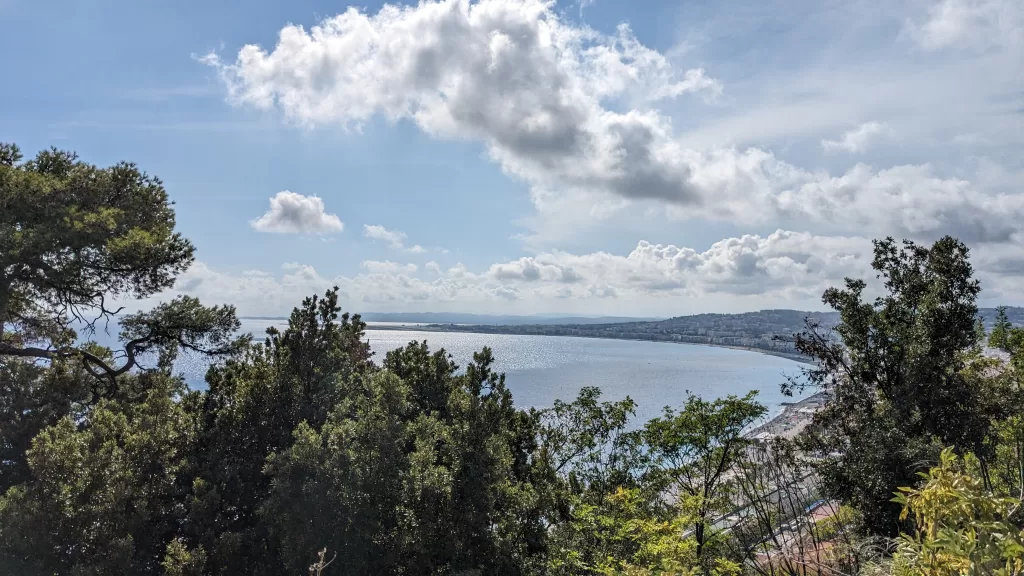
Nice – the heart of the Côte d’Azur
Nice is a must-see in the south of France and one of the largest cities in the region (and centre of the French Riviera). Strolling along the Promenade des Anglais, you’ll find stunning views of the Mediterranean Sea and a lively atmosphere.
A lot of artists from yesteryear seemed to head to Nice, so you’ll find a lot of museums and galleries such as the Musée Matisse. Castle Hill offers panoramic views of the Old Town and the bay. The Old Town itself is a maze of narrow streets, colourful markets, and traditional restaurants.
Nice is also well-connected, so a good base to explore Monaco, Antibes, Cannes and others – consider basing yourself here and seeing them on day trips, rather than travelling between them.
So, with a range of things to do and an anchor for many destinations in the South of France, consider Nice!
For ideas, here’s our Nice city guide with routes, things to do and day trips.
Must-see in Nice: Promenade des Anglais, Vieux-Nice and Cours Saleya market, Castle Hill (Colline du Château) for views, Musée Matisse, Musée Marc Chagall.
Getting there: Great base for day trips to Monaco, Antibes and Cannes – all easy by train.
Why go? Old-world Riviera charm with beach promenades, lively markets and compact museums – a perfect mix of sea and culture.
How long? Three days minimum to see everything; 4+ days if you want to add day trips to Monaco and Cannes.
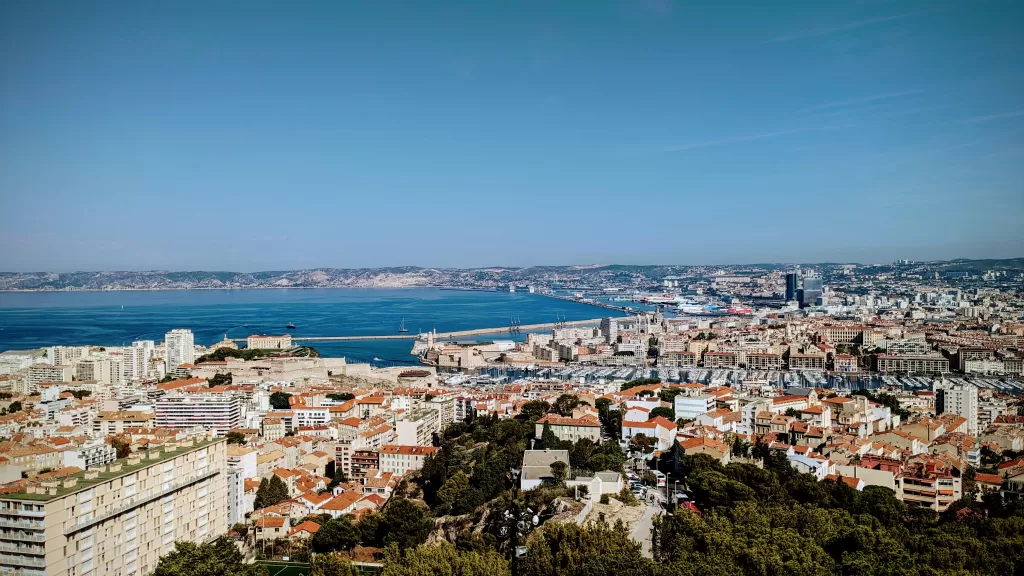
Marseille – a rough and ready city with history and the Old Port
Marseille, the second-largest city in France, offers history, culture, and modernity.
Begin your visit at the Old Port, the heart of the city since Roman times and one of Marseille’s great places to stop and watch the world go by.
The nearby Le Panier district is full of narrow streets and colourful buildings, and is a lovely area for a walking tour to soak in the atmosphere.
The Basilique Notre-Dame de la Garde has beautiful views of the city and the Mediterranean.
Marseille’s famous for it’s food scene too, with local markets full of fresh produce and seafood. For an authentic Marseille experience, try bouillabaisse, the city’s iconic fish stew.
Marseille can be a marmite city – some love it, some hate it. It’s dirtier and more rough round the edges than many French cities, but that’s why we loved it. Check out our full Marseille guide for the best places to go.
Must-see in Marseille: Vieux-Port (Old Port), Le Panier neighbourhood, Basilique Notre-Dame de la Garde, MuCEM and boat trips or short hikes into Calanques National Park.
Getting there: Marseille Saint-Charles is the main TGV hub. Marseille is good as a base for the Calanques and Cassis.
Why go? A vibrant city with historical sites and excellent seafood.
How long? Three days to see everything, longer if you plan Calanques boat trips and nearby hikes.
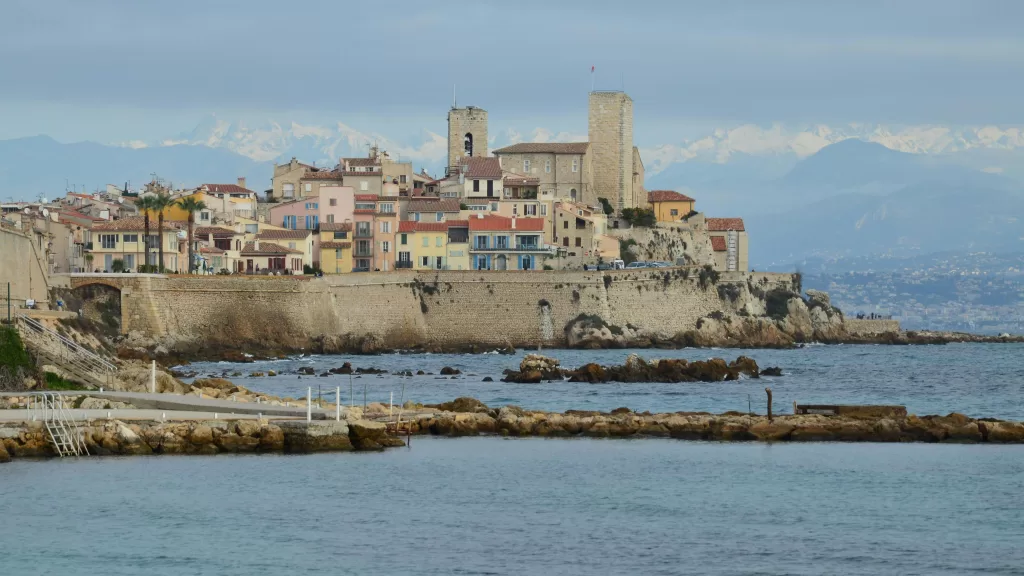
Antibes – Art and beaches
Located between Nice and Cannes, Antibes offers a mix of sandy beaches, historical sites, and a rich artistic heritage.
The Picasso Museum, housed in the Château Grimaldi, showcases some of the artist’s most iconic works, created during his time in Antibes. The old town is surrounded by ancient walls, with winding streets that lead to lively markets and charming cafes.
Antibes is also home to some of the most beautiful beaches on the Côte d’Azur, perfect for a lazy day by the Mediterranean. Don’t miss a stroll around Port Vauban, where luxury yachts anchor alongside historic fortifications.
Must-see in Antibes: Old town and the Picasso Museum (Musée Picasso), Cap d’Antibes coastal walks, Plage de la Salis, Marché Provençal.
Getting there: Quick train from Nice.
Why go? Classic Riviera town with beaches, markets and a charming art history connection.
How long? 1 day to explore; 2 days if you want relaxed beach time.
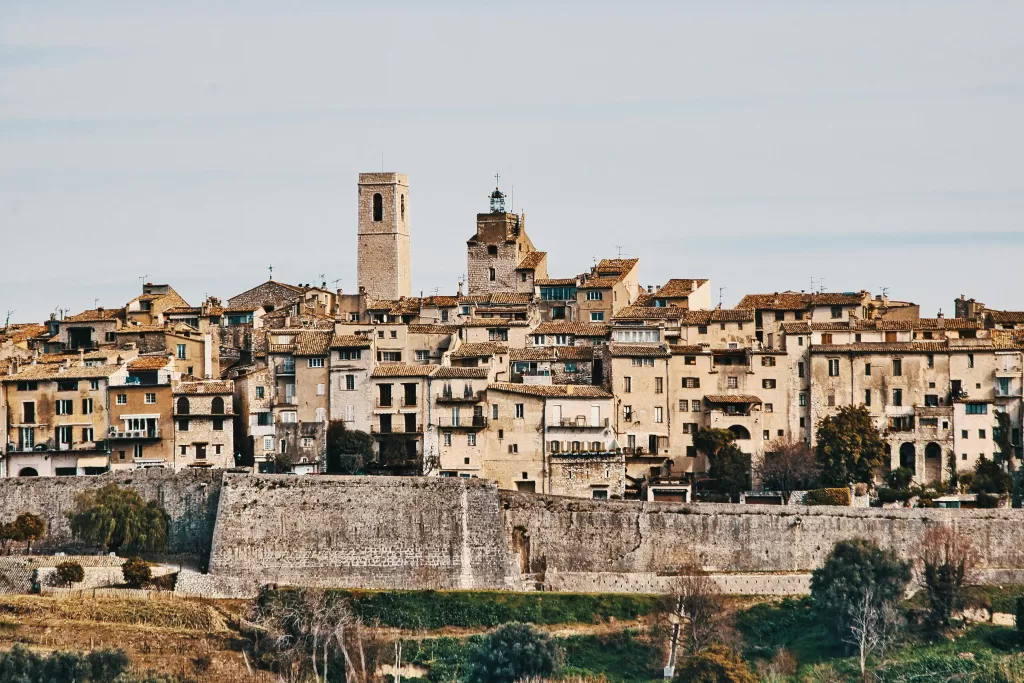
Saint-Paul-de-Vence – The artist’s haven
Tucked away in the hills, Saint-Paul-de-Vence is one of the most beautiful medieval villages in southern France.
Known as a haven for artists, the town has been home to famous figures like Marc Chagall and Henri Matisse. The village itself is a work of art, with narrow cobbled streets, ancient stone buildings, and stunning views of the surrounding countryside.
The Fondation Maeght, a modern art museum, is a must-visit featuring works by Joan Miró and Alberto Giacometti. Saint-Paul-de-Vence is also known for its intimate galleries, where local artists showcase their work.
Spend the day wandering the peaceful streets, stopping in one of the charming cafes for a glass of local wine.
Must-see in Saint-Paul-de-Vence: Medieval ramparts and narrow streets, art galleries and Fondation Maeght (modern art).
Getting there: Short drive or bus from Nice or Antibes, hilltop village streets are best explored on foot.
Why go? A quintessential Provençal hill village with an artistic history and scenic lanes.
How long? Half a day to one day.
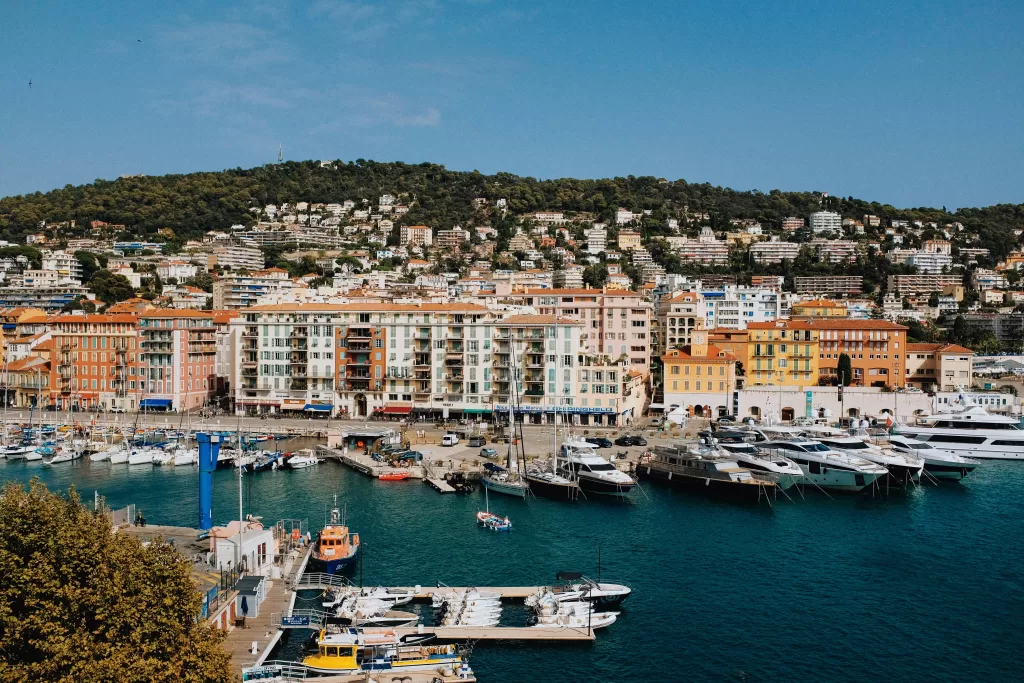
Cannes and the Boulevard de la Croisette
Cannes is famous for its film festival, but it’s also known for it’s glamour and luxury.
Stroll along the Boulevard de la Croisette, a seafront promenade lined with palm trees, high-end shops, and luxury hotels. This is the perfect place for people-watching, with glamorous visitors arriving at the Palais des Festivals in luxury cars.
Cannes also has beautiful sandy beaches where you can rent a sunbed and spend a relaxing afternoon.
But Cannes isn’t all glitz – head to the Old Town of Le Suquet for narrow streets lined with quaint restaurants and cafes. The panoramic view from the top of Le Suquet is amazing too with great views over the city and the bay.
Must-see in Cannes: La Croisette and the beach promenade, Le Suquet (Old Town), Palais des Festivals (Cannes Film Festival venue), Lerins Islands day trips.
Getting there: Easy train from Nice.
Why go? Glamour, beaches and people-watching, plus convenient island trips and coastal walks.
How long? At least a day, but if passing through you could see everything in 4-5 hours. Longer if you’re attending festival events or island excursions.
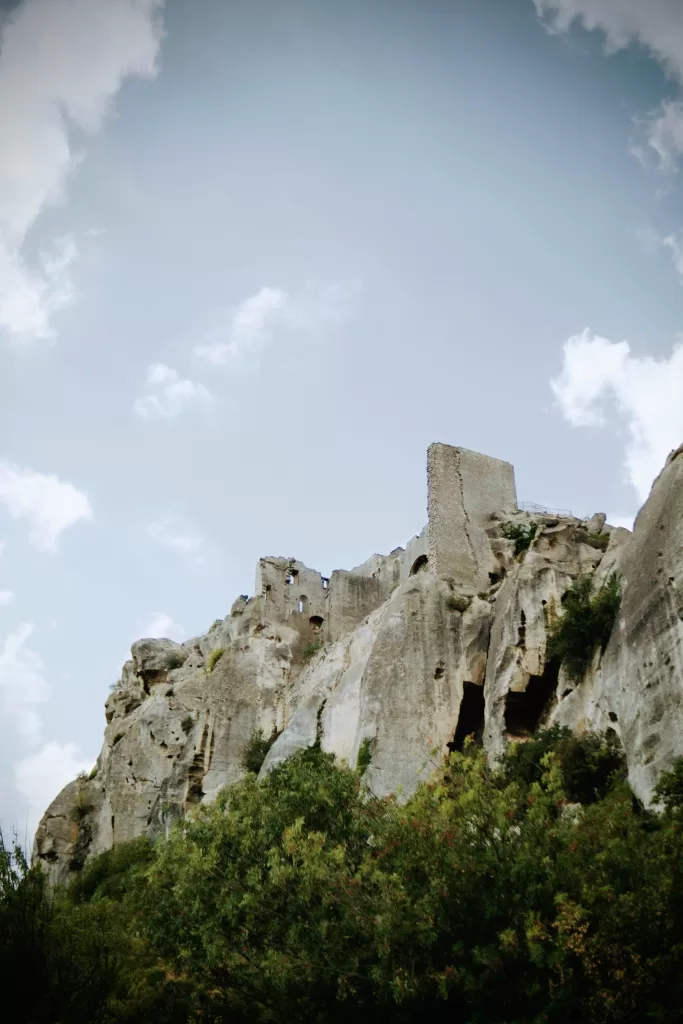
Les Baux de Provence – A hilltop treasure
In the heart of the Alpilles mountains, Les Baux de Provence is a medieval village perched high on a rocky hilltop. The Château des Baux is an ancient fortress which dominates the landscape and has panoramic views over the countryside. It’s easy to see why the village is considered one of the most beautiful in France.
Beyond its historical significance, Les Baux is known for its art and culture. The Carrières de Lumières, a former quarry turned immersive art experience, is a highlight.
Inside the quarry, artworks by masters such as Van Gogh and Cézanne are projected onto massive stone walls, creating an otherworldly experience.
Exploring the cobblestone streets and discovering hidden shops and cafes makes for a magical day.
Must-see in Les Baux-de-Provence: Château des Baux ruins and panoramic viewpoints, Carrieres de Lumières immersive show, local olive oil tastings.
Getting there: Driving from Arles or Avignon is simplest, or an organised tour.
Why go? Dramatic hilltop village with Provençal character and art experiences.
How long? At least a day, but if passing through you could see everything in 4-5 hours.
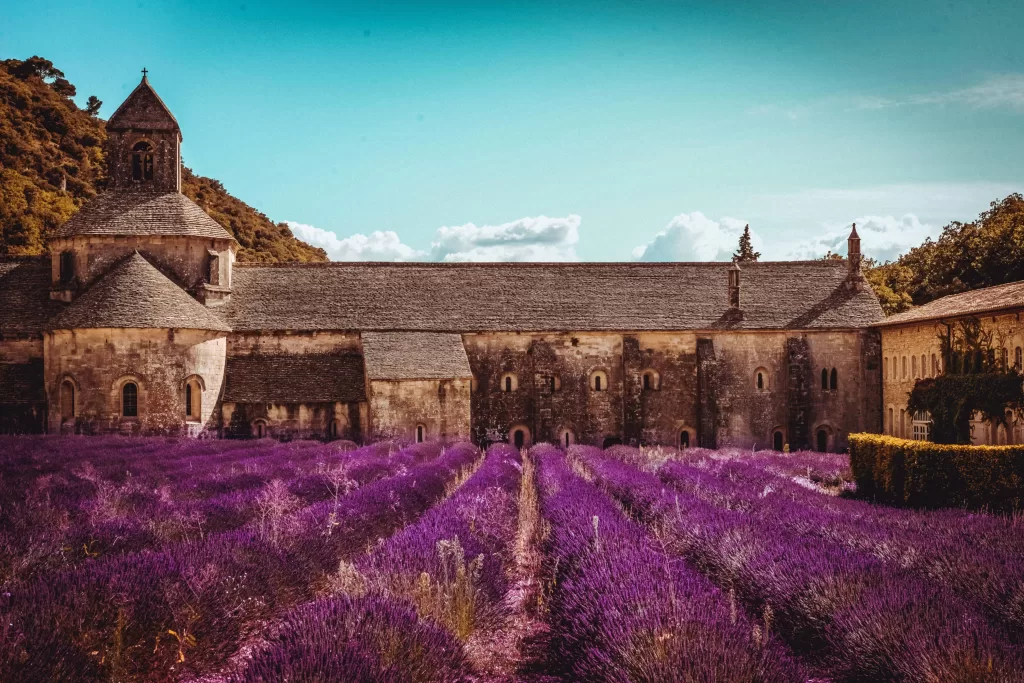
Lavender fields of Provence – The scent of summer
No trip to Provence is complete without visiting the region’s famous lavender fields.
From June to early August, the fields bloom in shades of purple, filling the air with their unmistakable fragrance. The Plateau de Valensole is one of the best places to see these fields, stretching as far as the eye can see.
The lavender fields are a photographer’s dream, and many guided tours offer insights into the history and cultivation of lavender in Provence. You can also visit lavender distilleries, where essential oils and other products are made.
Don’t miss the chance to buy some locally-made lavender honey or soap as a fragrant souvenir.
Must-see in the lavender fields of Provence: Valensole plateau with sweeping purple rows, Sénanque Abbey near Gordes, Sault lavender route, local distilleries and farm shops.
Getting there: Best reached by car; Valensole is the classic spot, but fields also appear around Sault and the Luberon.
Why go? Iconic Provençal scenery and fragrant fields.
How long? Half a day to a full day, depending on how many fields and villages you combine.

Pont du Gard – Roman engineering at its best
A UNESCO World Heritage Site, the Pont du Gard is one of the most impressive examples of Roman engineering in southern France.
It’s an ancient aqueduct, built in the 1st century AD, which is made even more incredible when you appreciate how well-preserved it is. It spans the Gardon River and once carried water to the nearby city of Nîmes.
Today, you can walk across the top of the aqueduct or take a kayak ride beneath it.
The surrounding park offers walking trails, picnic spots, and a museum dedicated to the history of the aqueduct.
Must-see at Pont du Gard: The ancient Roman aqueduct bridge, river swimming and picnic spots below the arches.
Getting there: A short drive from Avignon, Nîmes or Arles. Parking and shuttle services are available.
Why go? A UNESCO-listed Roman engineering masterpiece and a scenic spot to cool off in the river.
How long? 2–4 hours; longer if you add swimming or hiking along the river.
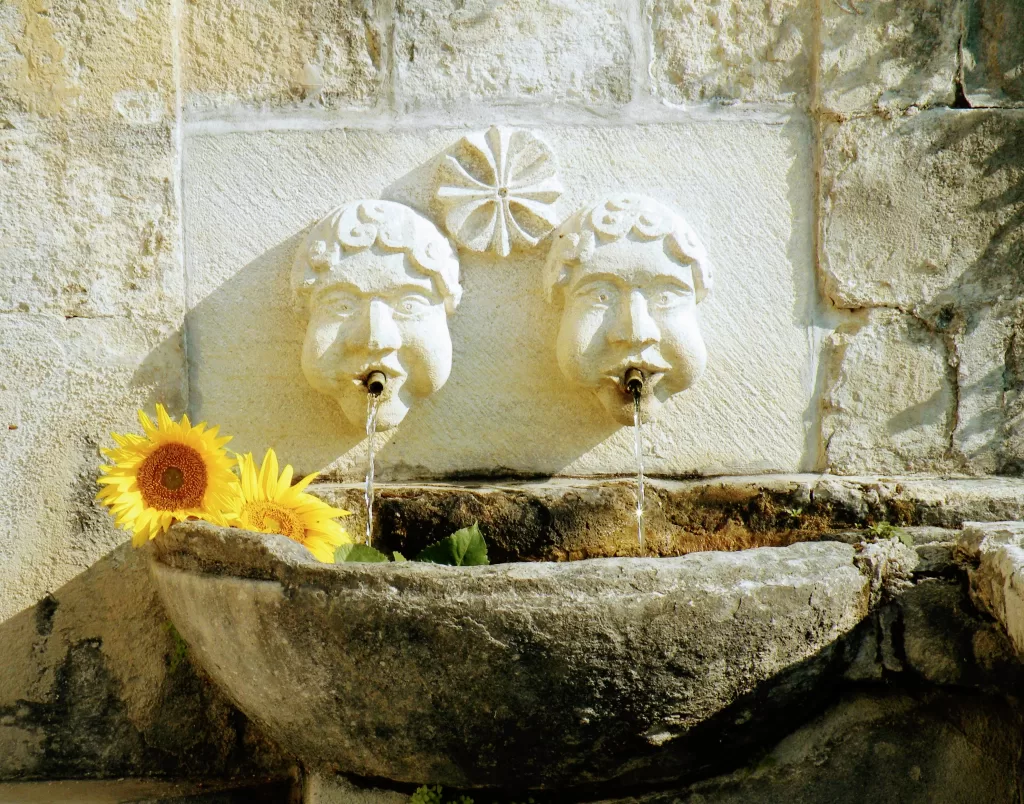
Aix-en-Provence – The city of a thousand fountains
Aix-en-Provence is a charming town known for its artistic heritage, bustling markets, and tree-lined boulevards.
The Cours Mirabeau is the heart of the city, a wide street filled with cafes, shops, and beautiful fountains. Aix is also famous as the home of Paul Cézanne, and you can visit his Atelier, where the artist created many of his masterpieces.
Aix’s markets are some of the best in Provence, offering everything from fresh produce to local crafts. The town’s art scene is lively, with several galleries and museums showcasing works by local artists.
Aix is also known for its spas, thanks to the natural thermal springs that flow beneath the city.
Must-see in Aix-en-Provence: Cours Mirabeau and the town markets, Mazarin quarter, Cézanne’s studio (Atelier Cézanne).
Getting there: Good rail and road links to Marseille and Avignon; an excellent central base for central Provence day trips.
Why go? A cute town with art, markets, and spas.
How long? 4-5 hours, but we’d recommend staying overnight and spending longer there.
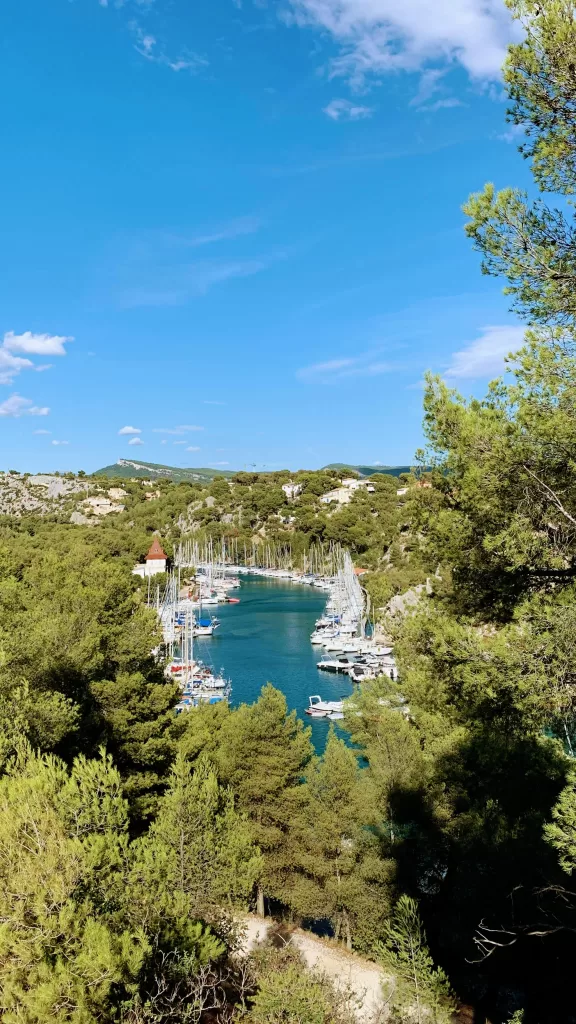
Cassis and the Calanques – Natural beauty on the Mediterranean
The small fishing town of Cassis is the gateway to one of the most stunning natural landscapes in the south of France: the Calanques.
They are a series of rocky inlets with steep cliffs plunging into the crystal-clear Mediterranean, and are perfect for hiking, swimming, or kayaking. A boat tour from Cassis will take you through these natural wonders, offering beautiful views and access to secluded coves.
Cassis itself is a picturesque town, with a harbour filled with colourful fishing boats and a lively waterfront lined with cafes and restaurants.
The local wines, especially the white wines of the Cassis AOC, are well-renowned – it would be rude not to sample them!
If you’re staying in Marseille, it’s an easy hop – see our Marseille places guide for how to pair it with the Calanques.
Must-see in Cassis: Early-morning Calanques boat tour, the port and waterfront cafés, short hikes to Cap Canaille viewpoints, local Cassis AOC wine tastings.
Getting there: Short train or drive from Marseille, also reachable from Nice by car; best as a day trip or overnight base for full hikes.
Why go? Dramatic limestone cliffs, crystal-clear coves and a relaxed harbour atmosphere. The Calanques are the main draw.
How long? A day trip works from Marseille or Nice; allow 1–2 days if you want to hike, swim and taste local wines.
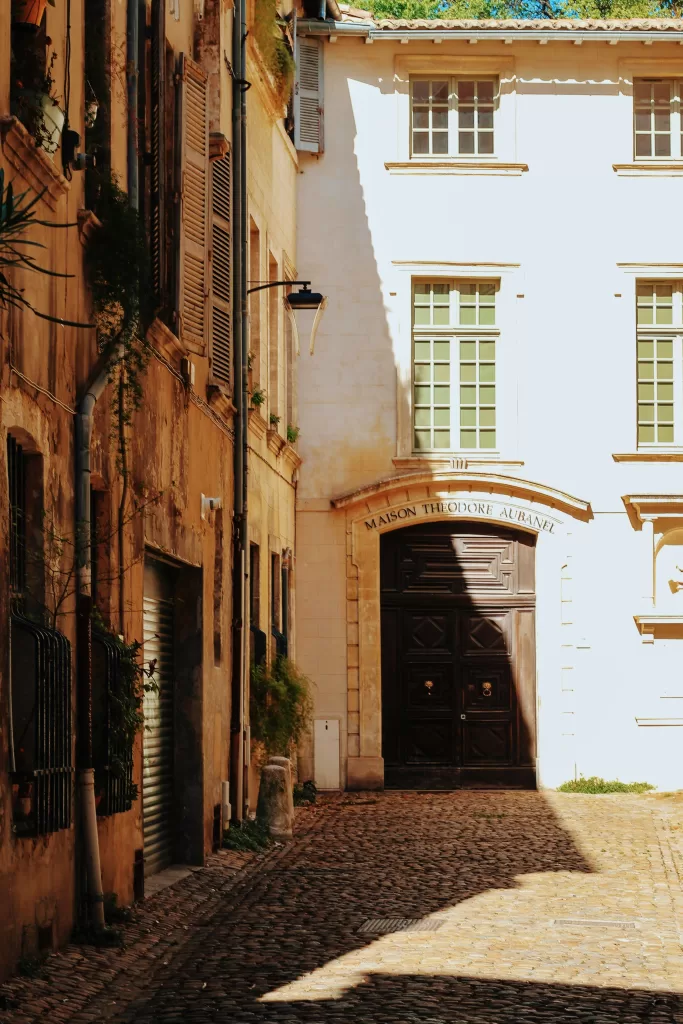
Avignon and the Palace of the Popes – A step back in time
Avignon is a city steeped in history, and its most famous landmark is the Palace of the Popes.
It was the home of the Catholic Church during the 14th century when the popes resided in Avignon. Today, you can explore its grand halls and chapels, full of perfect medieval buildings.
Avignon’s historic centre is also home to the Pont d’Avignon, a medieval bridge that once spanned the Rhône River.
The city comes alive during the annual Avignon Festival, a major event in the European arts calendar.
Must-see in Avignon: Palais des Papes (Palace of the Popes), Pont Saint-Bénézet (Pont d’Avignon), medieval old town and daily markets.
Getting there: Avignon TGV station links well to Paris and Provence day trips. It’s a good base for Pont du Gard and the Luberon.
Why go? Compact medieval city with one of Europe’s principal papal sites and a lively arts/market scene.
How long? 1–2 days in town; add extra nights if you plan to use Avignon as a base for wider Provence excursions.
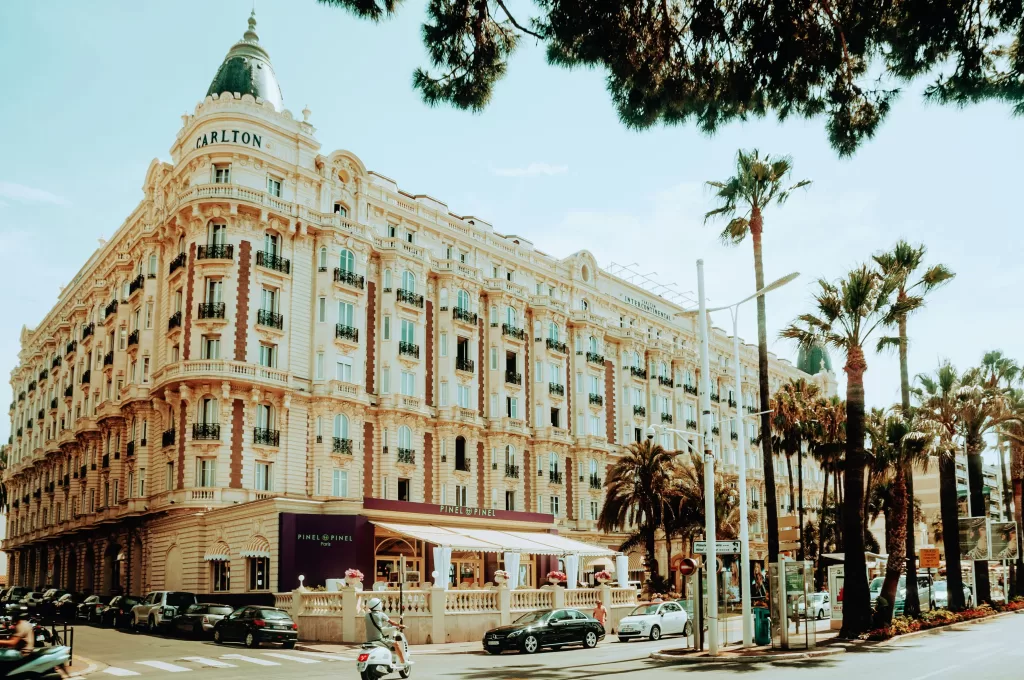
St. Tropez – The playground of the rich and famous
St. Tropez is synonymous with luxury, glamour, and endless summer.
It’s a small town on the Côte d’Azur, famous for its beaches, high-end boutiques, and luxury yachts. During the summer, St. Tropez attracts celebrities and jet-setters from around the world, making it a prime spot for people-watching.
Despite its glitzy reputation, St. Tropez also has a charming old town with narrow streets, colourful houses, and a market where you can pick up local produce and crafts.
Don’t miss a visit to the Citadel of St. Tropez, which offers panoramic views of the bay and houses a maritime museum.
Must-see in St. Tropez: Old harbour and luxury yachts, Place des Lices market, Citadel of St. Tropez, Pampelonne Beach.
Getting there: Reachable by car, boat from Nice/Cannes or seasonal shuttles. Traffic is heavy in peak summer, so ferries are often quicker.
Why go? A mix of Riviera glamour, beaches and nightlife.
How long? 1–2 days, or a day trip if you’re short on time.
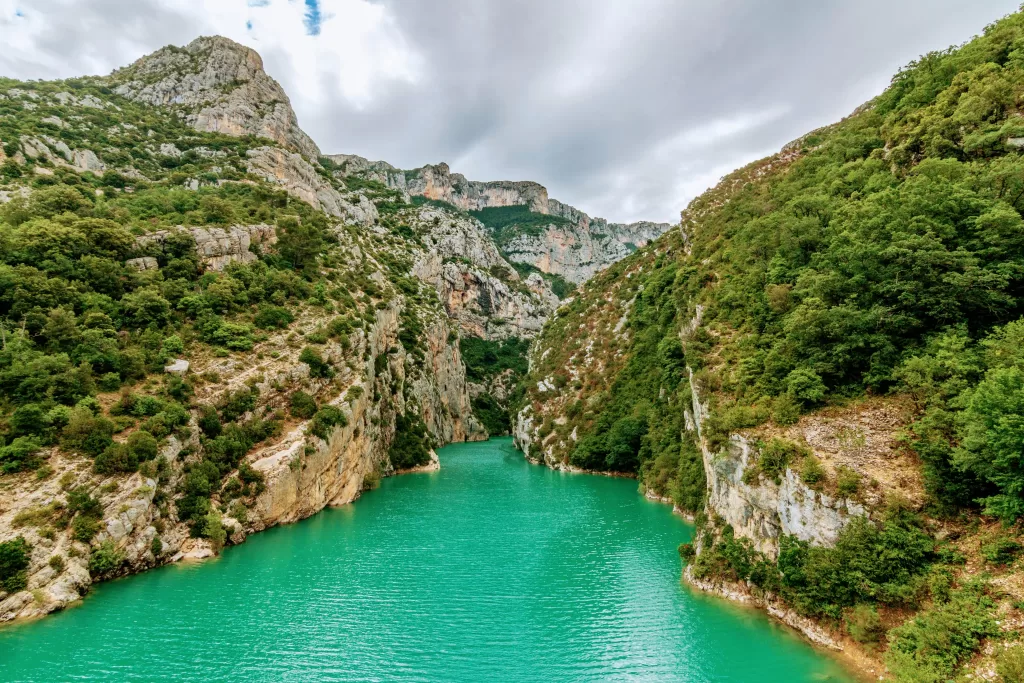
Gorges du Verdon – France’s Grand Canyon
Often referred to as the Grand Canyon of Europe, the Gorges du Verdon is one of the most breathtaking natural wonders in France.
The Verdon River cuts through towering limestone cliffs, creating a deep canyon that’s perfect for outdoor adventures.
You can kayak or paddleboard on the emerald-green waters, hike along the Verdon Gorge, or simply drive along the scenic roads that offer panoramic views.
The nearby town of Moustiers-Sainte-Marie, perched on a mountainside, is a great base for exploring the region.
Whether you’re into hiking, water sports, or simply admiring nature’s beauty, the Gorges du Verdon is a must-visit for adventure and nature.
Must-see in Gorges du Verdon: Scenic rim viewpoints, kayaking or canoeing on the turquoise river, hikes such as the Sentier Blanc-Martel and driving routes.
Getting there: Best accessed by car from Aix, Castellane or Moustiers-Sainte-Marie.
Why go? One of Europe’s most dramatic river canyons, ideal for hiking, paddling and outstanding scenery.
How long? 1–2 days to see the main viewpoints and do a short paddle or hike.
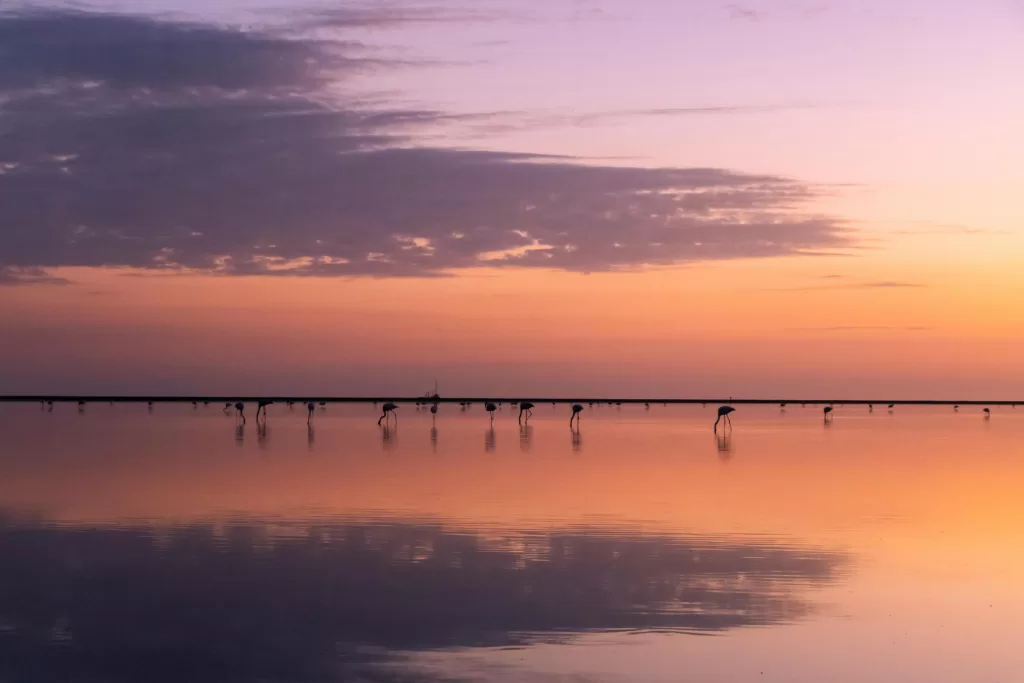
The Camargue – A wild and untamed landscape
The Camargue, located just south of Arles, is a vast wetland known for its unique landscape and wildlife.
The region is home to the famous Camargue horses, wild herds that roam freely across the salt marshes.
It’s also a birdwatcher’s paradise, with over 400 species of birds, including the iconic pink flamingos that gather in the shallow lagoons.
Exploring the Camargue by horseback or bike is a popular way to experience the region’s natural beauty.
The Camargue is a stark contrast to the more polished Côte d’Azur, offering more wild side to the south of France.
Must-see in the Camargue: Wild white horses and black bulls, pink flamingos at Parc Ornithologique du Pont de Gau, salt flats and beaches, Saintes-Maries-de-la-Mer village.
Getting there: Best accessed by car from Arles. Wide open landscapes mean a car gives you flexibility.
Why go? A unique wetland ecosystem with wildlife and beaches.
How long? 1 day for the highlights; 2 days to take things a bit slower and if you want birdwatching or to see the village.
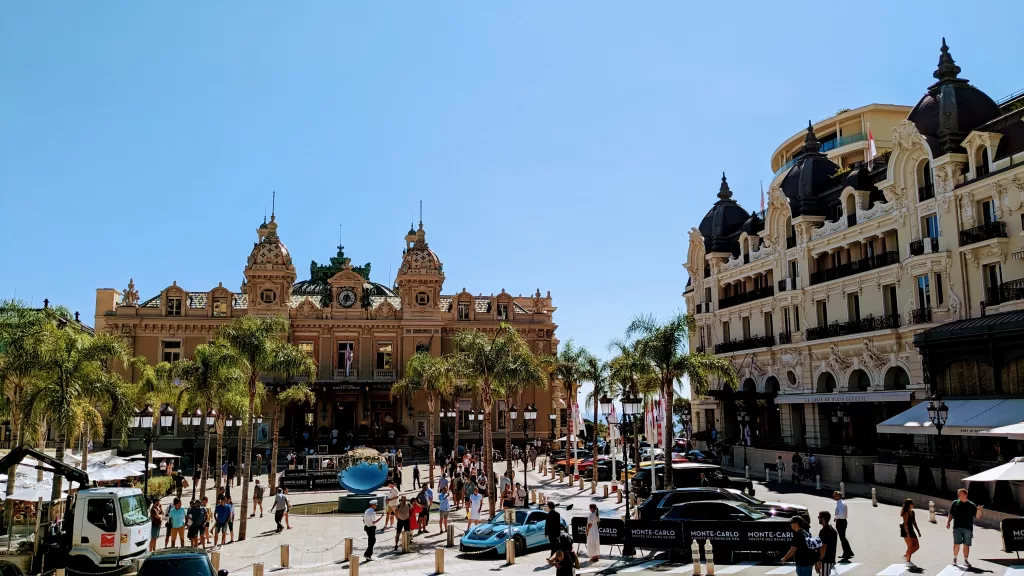
Monaco – the glitz and glamour
Though not technically part of France, the Principality of Monaco is nestled along the French Riviera and is an essential stop on any southern France itinerary. Known for its glitz, glamour, and stunning coastal views, Monaco is the epitome of glamour.
The tiny state is home to the famous Monte Carlo Casino, where you can try your luck at the tables or just go into the lobby to admire the architecture. Whether you gamble or not, the casino’s Belle Époque style is worth seeing.
Monaco’s charm extends beyond luxury and casinos. The Prince’s Palace of Monaco, located in the Old Town area known as Le Rocher, is a stunning piece of history.
You can explore the state apartments and catch the changing of the guard outside the palace at 11:55 a.m. daily.
The palace overlooks the harbour, where you can watch the luxury yachts bobbing in the Mediterranean and think about how many billions of dollars you’re currently looking at!
Monaco is a unique destination, and we’d definitely recommend a visit. Start with our 14 best places to go in Monaco, and then use these money-saving tips if you’re visiting on a budget.
Must-see in Monaco: Casino square and Monaco-Ville, Prince’s Palace, the Old Town
Getting there: Short train or bus from Nice.
Why go? A unique glitzy microstate with luxury and historical landmarks.
How long? One day is enough to see everything, but you could do two days.
Frequently asked questions about travelling to the South of France
So, where are you travelling to?
You don’t need a luxury yacht or a five-star budget to fall in love with the South of France – you just need a smart plan.
It’s packed with charm, variety, and just enough chaos to keep things interesting – and now you’ve got everything you need to explore it like a pro (or at least like someone who won’t fall into every tourist trap).
But this is just the starting point. Whether you’re building a full France itinerary or bouncing around Europe, why not:
👉 Check out all of our travel guides to France
👉 Join the email list for fresh travel tips
👉 Or check out our content on sustainable travel
This page contains affiliate links. If you make a purchase through one of these links we make a small commission to help run this site, at no cost to you. Making a commission never affects the advice we give - see our content policy.

